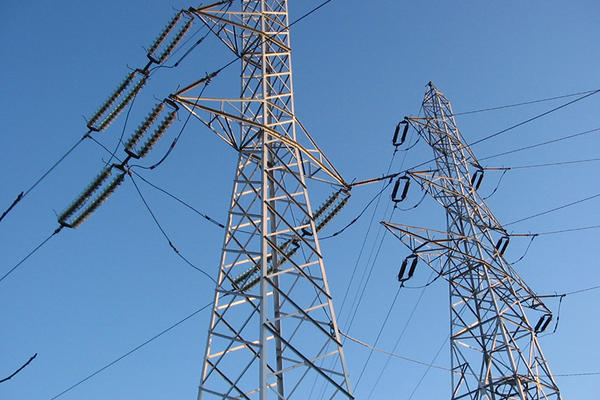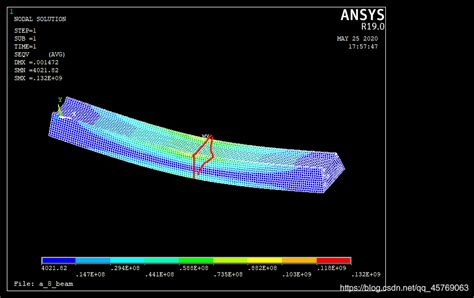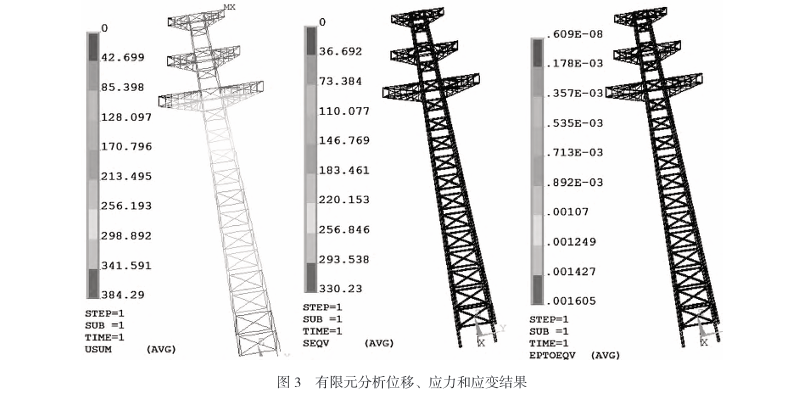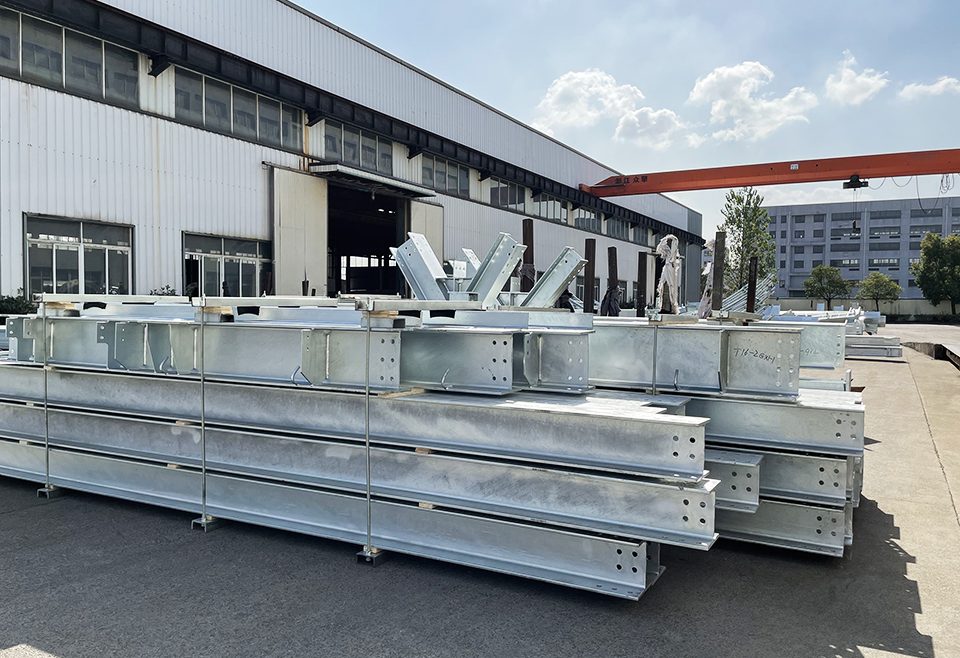
Mechanical performance of typical joints of angle steeltower based on finite element analysis
February 8, 2025
Lightning Protection Steel Tower
February 23, 2025ANALYSES ON THE ULTIMATE BEARING CAPACITY OF FLANGE JOINT USED IN STEEL TUBE TOWERS
1. Factors influencing the ultimate load-bearing capacity of flange connections
According to many studies, the ultimate load-bearing capacity of flange connections is affected by a variety of factors, including the thickness of flange plate, the number of bolts, the distance between flange and steel pipe, and the material strength. For example:
- Flange plate thickness : The thickness of the flange plate has a significant impact on the load-bearing capacity. Studies have shown that when the thickness of the flange plate increases, the load-bearing capacity of the flange connection increases. For example, some studies have pointed out that the thickness of the flange plate should be greater than 14mm to reduce the reduction in load-bearing capacity caused by plastic deformation.
- Number and layout of bolts : The number and layout of bolts also have an important impact on the load-bearing capacity of flange connections. For example, increasing the number of bolts can improve the fatigue strength and overall stability of the connection .
- Material strength : The bearing capacity of the flange connection is also closely related to the strength of the material used. For example, the use of high-strength steels (such as Q690) can significantly improve the ultimate load-bearing capacity of flange connections. .
2. Experimental and numerical simulation of ultimate load-bearing capacity
Multiple experimental and numerical simulation studies have verified the ultimate load-bearing capacity of flange connections:
- Experimental research : Through full-size experiments, researchers found that flange connections mainly manifest in two failure modes in the limit state: one is that excessive plastic deformation of the flange plate leads to a decrease in load-bearing capacity; the other is that the yield of the steel pipe leads to a failure of the connection. In addition, for different types of flange connections (such as neck flanges and flat welded flanges), experimental results show that flange plate thickness and number of bolts are key parameters that affect load-bearing capacity.
- Numerical simulation : Finite element analysis is widely used to predict the ultimate load-bearing capacity of flange connections. For example, through ANSYS software simulation, it was found that increasing the thickness of flange plates and the number of bolts can significantly improve the stiffness and load-bearing capacity of the connection. . In addition, for specific designs (such as flange connections with single-wind reinforcement plates), the finite element model is consistent with the experimental results well. .
3. Theoretical analysis of ultimate bearing capacity
Theoretical analysis further reveals the regularity of flange connection load-bearing capacity:
- Load-bearing capacity formula : Research shows that the ultimate load-bearing capacity of flange connection is positively correlated with its thickness, while the relationship is smaller with the length of the connecting plate and the thickness of the angle steel. .
- Failure mode : The main failure modes of flange connection include plastic deformation, bolt loosening and steel pipe yield. For example, loose bolts can cause fatigue failure of the connection under cyclic loading, such as wind loading or earthquake action.
4. Application and improvement
For practical engineering applications, researchers have proposed a variety of improvement measures:
- Strengthen design : By increasing the thickness of the flange plate, using high-strength steel or bonding channel steel, the load-bearing capacity and fatigue life of the flange connection can be significantly improved.
- Optimized layout : Reasonable arrangement of bolts and increasing the number of bolts can improve the overall stiffness and stability of the connection .
- New structure : For example, the use of multi-ring stiffening flange connection can further improve load-bearing capacity and stiffness.
in conclusion
Based on the above analysis, the ultimate load-bearing capacity of steel pipe tower flange connections is affected by a variety of factors, including material strength, flange plate thickness, number of bolts and layout method. Through a combination of experimental, numerical simulation and theoretical analysis, the load-bearing capacity of flange connections can be effectively predicted and optimized. At the same time, in actual projects, appropriate materials and design parameters should be selected according to specific needs, and corresponding improvement measures should be taken to improve the safety and reliability of the connection.
How does the thickness of the flange plate specifically affect the ultimate load-bearing capacity of the steel pipe tower flange connection?
According to the information I have searched, the thickness of the flange plate has a significant impact on the ultimate bearing capacity of the steel pipe tower flange connection. Specifically, the increase in the thickness of the flange plate can improve the strength and stiffness of the flange nodes, reduce the deformation of the flange plate and the stress concentration at the connection between the flange plate and the main material, thereby improving the ultimate load-bearing capacity of the flange connection. However, when the thickness of the flange plate reaches a certain value, its effect on improving the ultimate load-bearing capacity will gradually weaken, and it may even increase unnecessary material use due to the too thick flange plate, resulting in a decrease in economic efficiency.
In practical applications, the choice of flange plate thickness requires comprehensive consideration of load bearing performance and economy. For example, for ultra-high pressure steel pipe tower forged flanges, although the increase in the thickness of the flange plate can improve the initial stiffness and tensile bearing performance of the node, it will also increase the additional stress generated by the prying force on the bolt, thereby affecting the bolt Preloading and long-term stability of nodes. Therefore, the design of the thickness of the flange plate needs to be selected as reasonable as possible to achieve the best economy and safety while meeting structural safety.
In addition, the thickness of the flange plate also has a certain impact on the force of the bolt. The greater the preload force of the bolt, the greater the initial stiffness of the flange plate, but excessive preload force of the bolt may cause insufficient preload force of the bolt, which will affect the load-bearing capacity of the node. Therefore, when designing the thickness of the flange plate, it is also necessary to consider the influence of the bolt preload force to ensure that the bolt preload force is within a reasonable range.
The thickness of the flange plate has an important influence on the ultimate bearing capacity of the steel pipe tower flange connection.
What are the main differences between experimental research and numerical simulation in predicting the ultimate load-bearing capacity of flange connections?
The main differences between experimental research and numerical simulation in predicting the ultimate load bearing capacity of flange connection are mainly reflected in the following aspects:
- Differences in load carrying capacity :
- exist Among them, the difference in load-carrying capacity of flange joints between experiments and numerical tests was 14.76%, while the difference in casing joints was 18.83%. This shows that the numerical simulation results are slightly higher than the laboratory test results, probably because the numerical simulation better meets the ideal loading conditions .
- Differences in loading process :
- The flange joint develops rapidly in the initial stage, with a slight decrease in stiffness after yield, and then the load stabilizes, showing good late-stage load-bearing capacity. In contrast, the stiffness of the casing joint is slightly greater than that of the flange joint, and the ultimate strength is 2.85 times that of the flange joint. The force transmission mechanism is clear and the load distribution is uniform, showing good ductility and ultimate load bearing capacity. .
- Differences in material properties :
- exist In the meantime, the bending test results of IPCBI with CSW show that despite bending failure, excellent bending performance was shown. This is consistent with the results of numerical simulations, showing a significant effect of CSW on the ultimate load-bearing capacity of flange connections .
- Effects of model parameters :
- exist Among them, the bearing capacity of sliding bearings in two cross-sectional forms of CFST-1S and CFST-2S on the column top was numerical simulation and experimental comparison. The results show that the load-bearing capacity of the FE simulation has not decreased significantly, and although there are certain errors, the error is within an acceptable range. This shows that numerical simulation can better predict the load-bearing capacity of flange connections .
- Differences in loading conditions :
- In the finite element model verification, the error between the limit load and the test of the finite element model is within 15%, and the limit load-span deflection curve, limit load-axial strain curve and the test results are consistent well, indicating that the finite element model More accurate.
The main differences between experimental research and numerical simulation in predicting the ultimate load bearing capacity of flange connection lies in the specific numerical values of load bearing capacity, the details of the loading process, and the reflection of material properties. Numerical simulations are often better able to meet ideal loading conditions, thus providing more accurate prediction results.
What are the design details of the new multi-ring stiffening flange connection and their specific advantages for load-bearing capacity and stiffness?
The design details of the new multi-ring stiffening flange connection and their specific advantages to load-bearing capacity and stiffness are as follows:
Design details
- Multi-ring stiffening structure : The new multi-ring stiffening flange connection adopts a multi-ring stiffening design, which can significantly improve the load-bearing capacity of the flange node. Specifically, the bearing capacity of multi-ring stiffening can be increased by 50% to 80% compared to single-ring stiffening steel pipe nodes.
- Inner and outer rigid flange nodes : In addition to multi-ring stiffening, the new flange connection also introduces the design of inner and outer rigid flange nodes. This design not only improves the node’s load-bearing capacity, but also saves about 2% of material.
- High-strength bolts and stiffeners : In practical applications, setting up high-strength bolts and stiffeners can further improve the load-bearing capacity and initial stiffness of the node. For example, the 12.9-level high-strength bolt has higher pre-tension force and ultimate bearing capacity, while the stiffening ribs can protect the welds of the flange plate and column walls, making the coordinated working ability stronger .
Specific advantages of load-bearing capacity and stiffness
- Improved load capacity : The load capacity of multi-ring stiffening flange connection is significantly improved, specifically manifested as an increase of 50% to 80%. This improvement is mainly due to the optimized design of the multi-ring structure, which can more effectively disperse and transfer loads.
- Rigidity improvement : By setting the core cylinder and high-strength bolts, the initial stiffness and ductility of the nodes are significantly improved. For example, the arrangement of the core cylinder can improve the stress of the bolt group at the flange connection, reduce pretension loss, and improve the ductility and toughness of the nodes. . In addition, the use of high-strength bolts and stiffeners also significantly improves the initial stiffness and ductility coefficient of the nodes. .
- Material saving : Compared with traditional rigid flange nodes, the internal and external rigid flange nodes can save about 2% of the material, which has significant economic benefits in large-scale projects.
Application scenarios
The new multi-ring stiffening flange connection is particularly suitable for steel pipe tower design in ultra-high voltage, multi-turn, large span and other line projects. This design not only improves the safety and reliability of the structure, but also provides technical support for the engineering.
in conclusion
The new multi-ring stiffening flange connection significantly improves load-bearing capacity and stiffness through optimized design while saving materials.
How to optimize the bolt arrangement of flange connections through finite element analysis to improve its ultimate load bearing capacity?
According to the information I have searched, optimizing the bolt arrangement of flange connections to improve its ultimate load bearing capacity can be achieved in the following ways:
- Finite element analysis (FEA) :
- Flange connections are modeled and analyzed using finite element analysis software such as ANSYS Workbench. By simulating the stress conditions under different working conditions, it is possible to determine the stress and strain distribution rules of the bolt flange connection system under preloading and under pressure bearing conditions.
- By combining the optimized design idea with finite element analysis, the geometric dimensions of the bolt flange connection system can be optimized, thereby reducing the maximum equivalent stress on the joint, reducing the amount of flange deformation, and extending the service life of flange connection.
- Bolt stress correction coefficient :
- The bolt stress correction coefficient m is introduced in the design to take into account the additional bending moment generated by the deformation of the Q690 steel pipe to the bolt. Research shows that taking m to 0.62 can effectively improve the uniformity of the tension distribution of bolt groups, thereby improving the ultimate bearing capacity of flange connections. .
- Bolt layout density :
- The closer the bolt is to the pipe wall, the more the node ultimate bearing capacity can be improved. Therefore, optimizing the arrangement density of the bolts to make them closer to the pipe wall can effectively improve the ultimate load-bearing capacity of the flange connection .
- Bolt preload :
- Increasing the preload force of the bolts can increase the ultimate bearing capacity of the flange connection. Experimental and finite element analysis show that bolt groups with larger preload force have increased local load capacity and deformation under impact load .
- Bolt diameter :
- The increase in bolt diameter can increase the ultimate bearing capacity of the bolt connection of the composite pipe. Research shows that with the increase in bolt diameter, the ultimate bearing capacity of the composite tube bolt connection increases nonlinearly. .
- Washer design :
- Reinforced flange gaskets can reduce stress concentration in the inner wall of the tube and improve the ability of the hole edge to resist crack fallout. By designing and installing flange gaskets on the inner side of the pipe wall, the ultimate load-bearing capacity of flange connections can be effectively improved. .
- Bolt group damage characteristics :
- The damage characteristic of the bolt group is sequential damage. The first three bolts of the upper bolt group are initial load-bearing bolts, and their load-bearing capacity determines the load-bearing capacity of the overall connection structure. Therefore, the preload and distribution density of these key bolts should be ensured in the design .
- Bolt pretightening status :
- In the pre-tightening state, the overall stress and strain variation patterns of the bolt flange connector are basically the same as those of the general situation. As the pressure in the tube gradually increases, the stress and strain variation patterns of each component are basically the same. Therefore, the stress conditions under preloaded state should be fully considered in the design.
What are the specific research results of the impact of the use of high-strength steel on the ultimate load-bearing capacity of flange connections?
According to the information I have searched, the following specific research results are given to the impact of the use of high-strength steel on the ultimate load bearing capacity of flange connection:
- Application of Q690 high-strength steel :
- Research shows that the use of Q690 high-strength steel as flange material can significantly improve the ultimate load-bearing capacity of the flange. Q690 high-strength steel has high yield strength and tensile strength, which allows the flange to withstand greater loads when under stress, thereby improving the safety and reliability of the overall structure. .
- Finite element analysis and experimental verification :
- Through finite element analysis and axle tensile test, the research found that the design method of the Q690 high-strength steel flange is reasonable and can meet the requirements of engineering applications. The test results show that the flange node is subjected to reasonable force, and the stress correction coefficient of the bolt is recommended to be 0.62 to reduce the additional bending moment generated by deformation of the high-strength steel plate on the bolt. .
- Effects of bolts and flange plate thickness :
- The closer the bolts are to the pipe wall, the higher the bearing capacity of the flange. In addition, the thickness of the flange plate also has a significant impact on the node’s ultimate bearing capacity. Increasing the thickness of the flange plate can improve the bearing capacity, but when the thickness of the flange plate exceeds a certain value, the increase in thickness has little effect on improving the bearing capacity .
- Effects of steel pipe diameter and thickness :
- The diameter and thickness of the steel pipe have a significant impact on the ultimate bearing capacity of the flange connection. Research shows that the ratio of steel pipe diameter to thickness has an important influence on the bearing capacity of the flange. Larger diameter and thickness ratio can improve the bearing capacity of the flange. .
- Effects of residual stress on welding :
- Residual stress and residual deformation during welding have a significant impact on the stress of the flange node. Rigid flanges using stiffeners have great influence on welding residual stress and residual deformation, so special attention should be paid to these factors during design. .
- Application of neck-forged flange :
- The neck-shaped flange combines the advantages of rigid flanges and flexible flanges, and has the characteristics of large stiffness, small deformation and low welding volume. Research shows that the tensile bearing performance of the nodes at different bearing capacity levels is good, the ultimate load reaches 130%~150% of the designed load, and the flange thickness, neck slope, bolt preload and Load eccentricity is a key parameter that affects load-bearing performance.
Related posts
The analysis of the bearing capacity of a power transmission line steel tower highlights the complexity and importance of structural and foundation design. By understanding the interplay of loads, material properties, and environmental factors, engineers can optimize tower performance and ensure reliability in power networks. Tables and case studies further illustrate best practices and design considerations.










